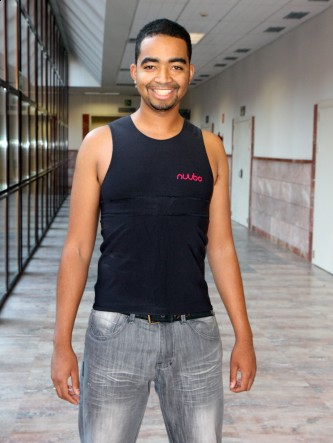
Spanish scientists have developed a so-called “intelligent t-shirt,” which can wirelessly monitor and record a patient’s vital signs.
But that’s not all, say researchers at Carlos III University in Madrid. This “intelligent” t-shirt can also locate and track patients within the closed spaces of the health care facility, even going so far as to determine if the patient is sitting, lying down, walking or running.
Right now, to monitor a patient’s vital signs, hospitals usually attach sensors and probes with connecting wires that tether the patient to a fixed area.
The t-shirt offers a non-intrusive way to measure and monitor a number of a patient’s physiological parameters such as body temperature, heart rate and other cardiac information usually provided by an electrocardiogram unit.
It also gives health care workers a way to find wanderers if their patient gets too carried away with the freedom and portability being wireless offers.
The system, which is currently designed for use in hospitals, is split into two parts. First, there’s the system’s fixed infrastructure, which would be installed in the hospital itself. The second unit would be the mobile devices or “intelligent” t-shirts themselves, which would move with the patients.
The t-shirt is washable. Along with cardiac monitoring, the garment comes with a removable device containing the thermometer and accelerometer, which shows whether the patient is sitting, walking or standing as well as the patient’s current level of physical activity.
The monitoring data is sent by wireless communications to a central information management system that processes, records and stores the information so doctors and other health care workers can retrieve it for future study, analysis or reference.
Another benefit is that the t-shirt system provides a variety of programmable alarms, which could alert medical workers when certain vital signs exceed or dip beneath the optimum limits for the patient. When an alarm sounds, a message will appear on the system’s information screen and can also send the alarm to the patient’s doctor or health care worker’s mobile phone via an SMS text message.
The garment could eventually allow patients to be monitored in their own homes, instead having to stay in the hospital for longer periods of time.
The t-shirt, which is in the prototype stage now, is still being developed to allow for improvements and additional features.





















Comments are closed.